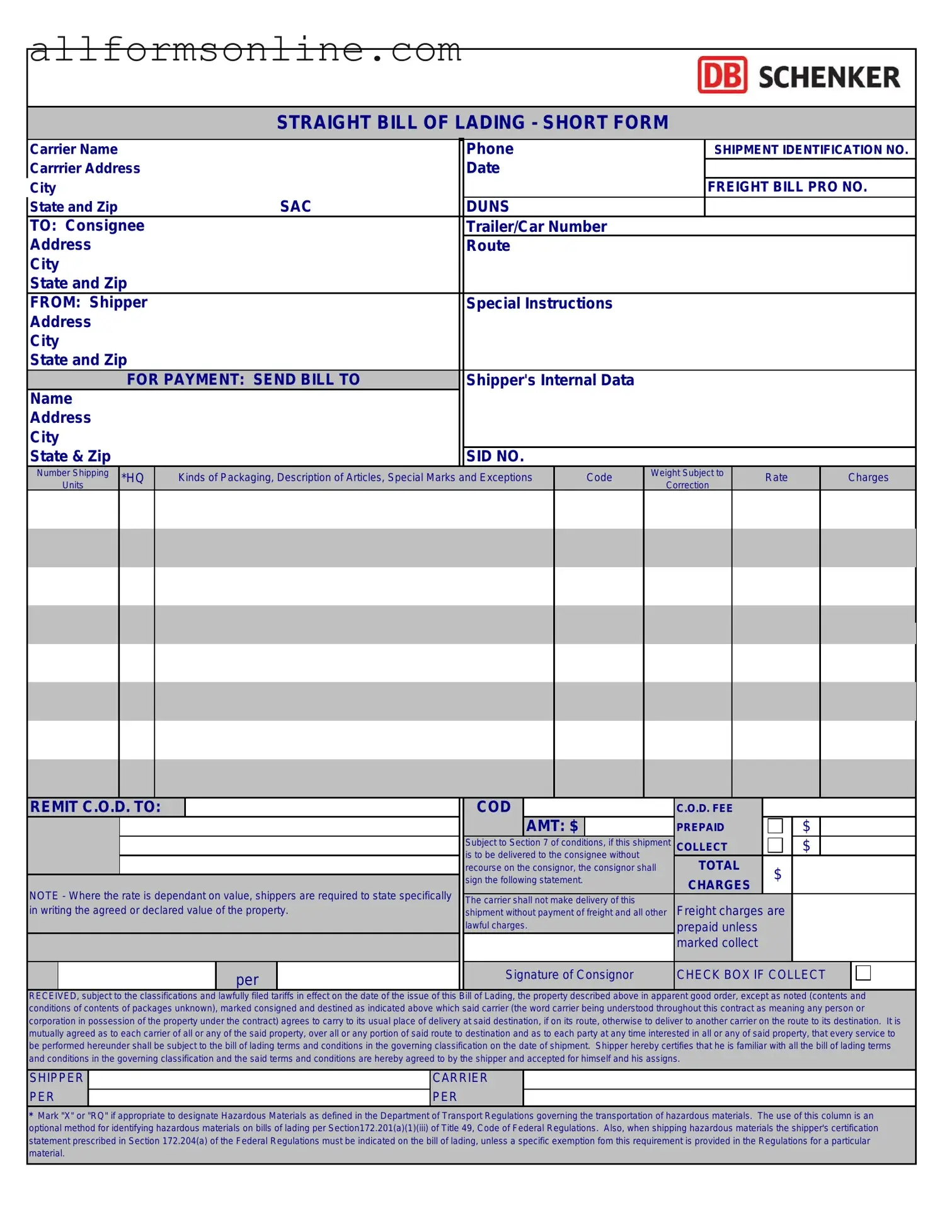What is a Straight Bill of Lading?
A Straight Bill of Lading is a shipping document that serves as a receipt for goods and a contract for transportation. It specifies the details of the shipment, including the names of the shipper and consignee, the type of goods being transported, and the terms of delivery. Unlike other types of bills of lading, a Straight Bill of Lading is non-negotiable, meaning that the goods can only be released to the named consignee. This document provides clear instructions for the carrier and ensures that the shipment is handled correctly.
What information is typically included in a Straight Bill of Lading?
A Straight Bill of Lading usually contains several key pieces of information. This includes the shipper's name and address, the consignee's name and address, a description of the goods, the weight and quantity of the shipment, and the shipping method. Additionally, it may include any special instructions for handling the cargo. This information is crucial for ensuring that all parties involved understand the terms of the shipment and can track the goods throughout the transportation process.
How does a Straight Bill of Lading differ from other types of bills of lading?
The primary difference between a Straight Bill of Lading and other types, such as a Negotiable Bill of Lading, lies in its transferability. A Straight Bill of Lading is non-negotiable, meaning that only the named consignee can claim the goods upon delivery. In contrast, a Negotiable Bill of Lading can be transferred to another party, allowing for greater flexibility in the sale or transfer of goods during transit. This distinction is important for businesses that need to understand their rights and responsibilities regarding the shipment of goods.
What should I do if there is a problem with the shipment documented by a Straight Bill of Lading?
If a problem arises with a shipment documented by a Straight Bill of Lading, it is essential to address it promptly. First, review the bill of lading to confirm the details of the shipment and any terms that may apply. Contact the carrier to report the issue, whether it involves damage, loss, or delays. Keep a record of all communications and document any evidence related to the problem. If necessary, consult with a legal professional to understand your rights and potential next steps in resolving the issue. Taking these actions can help ensure that the situation is handled effectively and efficiently.
